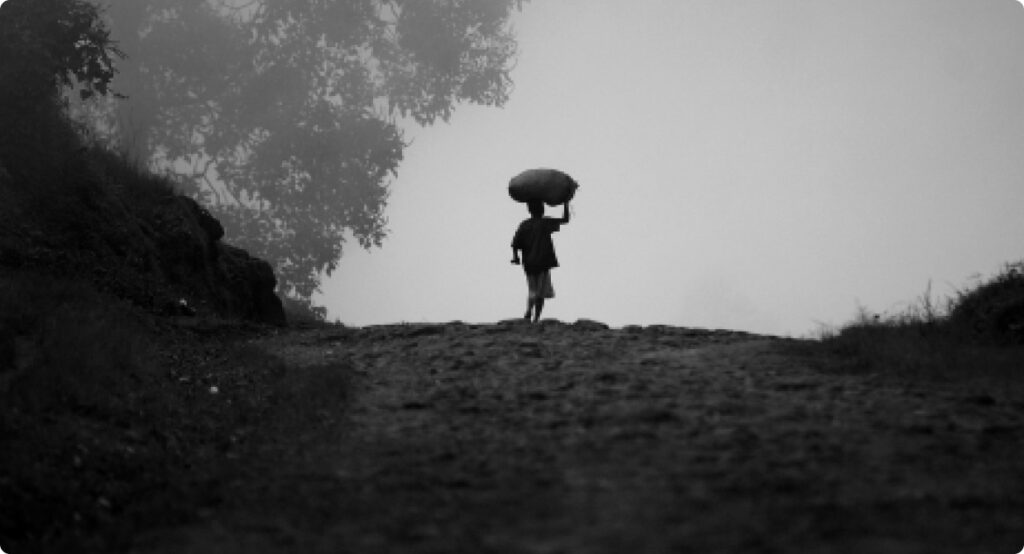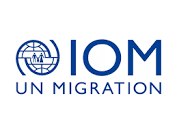The International Labour Organization (ILO) defines labour migration as ‘the movement of person(s) from their home State to another State for the purpose of employment. A “migrant worker” is defined in the International Labour Organization (ILO) instruments as “a person who migrates from one country to another (or who has migrated from one country to another) with a view to being employed other than on his own account, and includes any person regularly admitted as a migrant for employment.” It is the quest for higher wages and better opportunities that motivate most migrants to leave their home countries. While many respond to the demand for their skills abroad, others are forced to relocate to another country for extreme reasons like natural disasters, famine, violent conflicts, and persecution in their fatherland.
In 2019, the International Organization for Migration (IOM) estimated that about 86 million persons in the world are either working or living in a country other than their country of birth. Africa is not left out of this data as there is hardly any African country not participating in migration flows, whether as countries of origin, transit, or destination. Demand in economic sectors such as agriculture, fishing, mining, and construction, as well as services such as domestic work, health care, cleaning, restaurants and hotels, and retail trade, are significant drivers of labour migration within the continent. It is common practice that migrant workers find domestic and care work in the homes and institutions of countries richer than theirs. This uncovers much about social change that can be observed in the twenty-first century. With much involvement of Africans and African countries in migration, particularly labour migration, it becomes imperative to better understand how labour migration affects the African continent in terms of development and growth.
Every day, people migrate from country to country for various reasons ranging from seeking a better life to seeking safety away from crisis/war zones. It has become really popular hence, the need for the media to cover it as it affects the countries of residence directly.
Today, labour migration has become a crucial element in the economy and should not be underestimated. This is where the media comes in as they may be assumed to be the agenda-setters as well as the framing tool. According to the World Migration Report 2018, media, in all its forms, plays a significant role in the framing of policy discourses that affect how people act, what people think, how policymakers prioritize agendas, and how migrants make decisions. This brings out the significance of labour migration as a beat in journalism.
However, there is an assumption that priority may be given to other beats over labour migration as it may not be as popular as other beats.
From observation, there has been little or no work done in this area. This study will be useful to the academic field in terms of data storage, bridging knowledge gaps, research, and analysis, the field of journalism and the media in terms of shared experience, the government in terms of security, sponsorship, and provisions, and the society in terms of information.
In addition, research on labour migration journalism seems to focus more on media content than the experiences of the journalists that cover the beat, as well as the role the gender of the journalist plays in covering this beat. Hence, policy makers and governing bodies will find this study relevant.
The necessity of frequent reporting of quality migration stories cannot be over-emphasized and as such, it should be significantly featured in mainstream reporting, to bring awareness to cross-cutting dimensions of labour migration and the experiences of the journalists bringing the stories to light. This study seeks to explore the lived experiences of labour migration journalists and the perception of experts in the media industry on media coverage of migration in Africa with a particular focus on labour migration.
At the end of the study, it is expected that the following research questions would have been adequately answered:
- Who are the women covering labour migration in Africa?
- What are the general perceptions of media editors on labour migration journalism?
- What are the unique experiences of labour migration journalists?
- How many women journalists specialize in labour migration in Africa?
- What are the capacity gaps for women journalists in labour migration?
The study made use of a mix of research tools including an online questionnaire, a virtual focus group discussion and in-depth interviews.
The questionnaire of 13 items was distributed to respondents via emails and WhatsApp messaging application software using a snowball (referral) sampling technique. The virtual focus group discussion, that had in attendance 10 participants included journalists, editors and media personnel from Ghana (1), Nigeria (4), South Africa (2) and Zimbabwe (3), was carried out via Microsoft Teams. Two of the in-depth interviews were done through Google Teams and one via Skype.
Respondents from countries in the Northern, Southern, Eastern, Western and Central regions of Africa participated in the survey mix. The respondents were a combination of Journalists, Editors and other Media Professionals working with a variety of media outlets from countries such as Cameroon, the Democratic Republic of Congo, Egypt, Ghana, Liberia, Nigeria, Kenya, Namibia, Rwanda, Sierra Leone, South Africa, South Sudan, Tanzania, Uganda, Zimbabwe and African journalists in diaspora(outside Africa).
Key Findings
The analysis from the survey, focus group discussion and in-depth interviews found the following to be true of Labour Migration Journalism in Africa:
In terms of the perception of labour migration journalism in Africa, a large percentage of the respondents (63.46%) feel that labour migration journalism should be strongly encouraged, 23.08% feel it should be encouraged. A minority of the respondents are either indifferent or feel it should be discouraged. This shows a tendency for a huge acceptance of labour migration as a beat if it is well supported.
Figure 1: Perception of Labour Migration Journalism
The survey revealed that the portrayal of Africa in terms of labour migration showed 17.23% of the respondents think Africa is well portrayed in terms of labour migration, 73.08% do not think Africa is well portrayed in terms of labour migration, 5.77% are indifferent while 3.85% majorly specified that they were not so sure if Africa is well portrayed in terms of labour migration.
Figure 2: Africa’s Portrayal in Terms of Labour Migration
For this open-ended question, nearly all the responses point to the fact that the focus of labour migration journalism and reporting in Africa is limited and focused on contents, that is, migrants’ stories and their experience alone. Some do not even place it as a priority. This is influenced by some government policies and the unpopularity of the specialized beat in many African media.
Nearly all the responses from all the three survey tools point to the following factors that influence whether female journalists cover the beat successfully. They are; unfavorable government policies, limited resources and data, limited access to training, insecurity for the journalists and the unpopularity of the specialized beat. To break this down further, the following major challenges were identified by respondents and discussed in this study;
- Little to no access to data on migrants
- Lack of financial resources
- Lack of access to reliable sources
- National legal and political framework
- Publication gap
- Gender bias and discrimination in the workplace
61.2% agree that these challenges shaped their career. The only respondent that chose ‘Other (Please Specify)’ thinks that the experiences (and challenges) have largely not shaped their career. Despite their interest in labour migration beat in Africa, there is inadequate access to training and skill acquisition to report this beat properly.
Figure 3: If Challenges Shaped Journalist’s Career
Respondents were at liberty to proffer solutions to the challenges identified in the questionnaire, answers from the interview and focus group discussion..
Some of the major solutions suggested are highlighted below:
- More training and funding for labour migration journalism by governments, international NGOs and media houses.
- Better coordination of the collection of data on migrants and other labour migration-related issues.
- Advocacy for better salaries and incentives for labour migration journalists.
- More collaborations between national, international and regional journalism federations and/or organizations towards pushing for frameworks to promote labour migration journalism in Africa.
- Laws and policies which give journalists easy access to data and information.
Even more, so is the limited involvement of women journalists whose vast majority are freelancers or journalists who work for International Organisations such as the International Labour Organisation (ILO) or the International Organisation for Migration (IOM).
Nearly all the responses from all the three survey tools point to the fact that the focus of Labour Migration Journalism and reporting in Africa is limited and focused mostly on contents, contents such as Migrants’ stories and their experience alone are reported, some of which are not considered priority. This predicament on the reportage of Journalists’ experiences is influenced but not limited to factors including unfavorable government policies, limited resources and data, workshops and trainings, insecurity of the lives and family of Journalists and the unpopularity of the specialized beat in many African media.
CONCLUSION
The labour migration beat is one of the most interesting and exciting but under-rated area of specialized reporting in Africa. The respondents of this study share various experiences that illustrate this.
Little work with a focus on labour migration journalism has been done. The focus is more on content. Research works concentrate on how migration stories are written and disseminated. There is little information on what the journalists go through to get these stories especially the female journalists given the obvious gender imbalance in most countries in Africa. This is very vital information not to be taken for granted because the labour migration beat is as relevant as any other specialized reporting in media houses. In fact, it may be more relevant than some beats.
Despite a rising interest from female journalists to cover this beat, there are many internal and external challenges that make reporting on labour migration difficult for many. The women that cover the labour migration beat in Africa, are passionate about migration stories because of the positive outcome in the short and long-run and this is what drives them.
The general perceptions of media editors on labour migration journalism is a mix of both positive and negative as the study revealed that editors see it as an interesting beat but it is not a popular one therefore, it is not so welcoming in most press houses. A few press houses infuse the beat into the foreign desk.
The unique experiences of female labour migration journalists can be described as both exciting and traumatic. Exciting because of the interesting discoveries they make while covering a labour migration issue and the positive outcome it brings. It is traumatic because the process can be brisk with little or no support from fellow journalists, editors, media organizations and the government.
RECOMMENDATIONS
Further research should be carried out involving more African countries to get a broader view of the experiences of female journalists covering the labour migration beat. This will create awareness on the journalistic practice in labour migration. Focus can be on the media house, government policies and capacity gaps of women journalists that cover labour migration
Media organizations need to sensitize fellow colleagues, people and public offices on information sharing to journalists covering labour migration. Also, the reception of migrant journalists should be encouraged. This support will go a long way in proving fantastic deliverables and positively incredible work output for the organization and improved career and self-development.
Gender policies, recognizing the need for work-life balance for women in the media need to be enacted. The whole human person as a functioning being needs to be recognized not just their work output ensuring dignified work. Government should also enforce security measures for journalists in the line of their duties. When these journalists feel safe, they can work better, be more ethical and produce great stories.
Governments should also enforce security measures for journalists in the line of their duties. According to Audronius Ažubalis Minister for Foreign Affairs of the Republic of Lithuania “The true quality of a nation’s democracy can be measured by the security and safety of its journalists” (Horsley 2012). Like the Republic of Lithuania, 57 countries in Europe, Central Asia and North America are registered under a platform called Organization for Security and Co-operation (OSCE) which addresses a wide range of security-related concerns including freedom of the media and safety of journalists (which is one of their priorities)
Countries in Africa can either get involved OSCE or set up a similar body which will go a long way in ensuring the safety of journalists and freedom of the media. When these journalists feel safe, they can work better, be more ethical and produce great stories.








